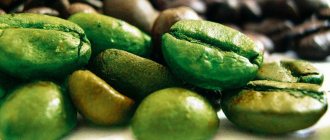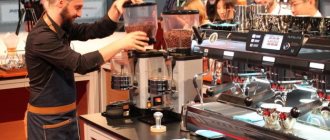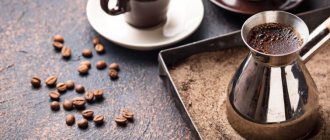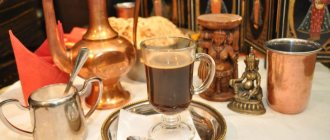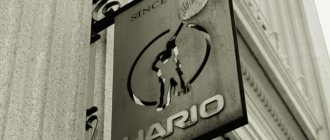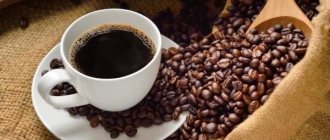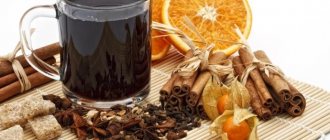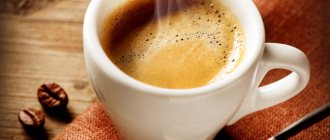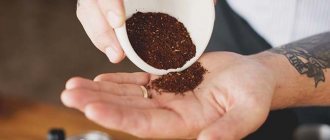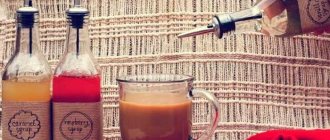A drink called “filter coffee” is often offered in coffee shops instead of Americano. This is a large cup of black coffee, but not made in an espresso machine, but by pouring hot water through a layer of ground coffee and a paper filter. In Russia, filter coffee is not yet as popular as Turkish coffee, but it is a simple and fairly inexpensive (compared to carob and capsule coffee makers) brewing method. Together with Ilya Savinov, founder of the online coffee roasting service Torrefacto, we’ll figure out how to make delicious filter coffee at home.
Features of the technique
During filtration, boiling water slowly passes through a layer of coffee powder. In this case, the grounds do not get into the finished drink. It remains in the filter. The preparation technology is similar to brewing espresso, but has certain differences.
To obtain a classic Italian drink, water must pass through coffee fractions under pressure. This takes no more than thirty seconds. The grinding of the grains should be fine. They must be compacted tightly.
When brewing a filtered version, the liquid passes through the coffee powder much more slowly. In this case, only gravity is used. The grinding of the grains should be coarse or medium. This point must be taken into account. Otherwise, there will be no air space left for water to seep through.
When using this technique, the liquid interacts with the crushed grains much longer. Thanks to this, the finished drink is much denser and stronger.
Filter coffee from Chemex
A popular way to make filter coffee these days is using a Chemex.
. Due to the ritualism, beauty of the process and the taste of the resulting drink, it is loved by specialized coffee shops and connoisseurs of making coffee as a special ritual. The name Chemex from the English “chemistry” - chemistry, reflects the essence of the process. Chemex coffee is alchemy.
The Chemex device itself was born in a chemical laboratory in 1941. Chemist Peter Schlumbom, wanting to make delicious coffee at his workplace, connected an ordinary glass flask and a funnel. Thin paper folded into a cone was used as a filter. Later, the funnel and flask were connected by a wooden rim and a leather cord.
Chemex cooking method
quite simple:
- Moisten a paper filter with hot water;
- Add medium grind coffee;
- Pour a thin stream of hot water at 90-96 0C over the coffee using spiral movements. In this case, the ratio of ingredients is as follows: for 30 grams of coffee you will need half a liter of water. For pouring, a teapot with a long thin spout is usually used;
- After the filtration process is completed, stir the finished drink to saturate it with oxygen and better develop the taste and pour it into a cup.
Chemex filter coffee is soft and very aromatic.
Chemex is quite fragile, but the aesthetic perception of the brewing process is certainly fascinating.
Advantages
One of the main advantages of this type of coffee drink is its excellent taste. True, this is not the only reason why many coffee lovers choose this method of brewing beans. There are several reasons for this decision:
- If the grounds are not completely strained out, there is a negative effect on the gastrointestinal tract. When using coffee machines, such problems are rarely observed. When brewing in a Turk, particles often remain in the finished coffee. The filter helps remove even miniature fractions.
- It is possible to avoid negative effects on blood vessels. Coffee beans contain components that can impair blood circulation and lead to the deposition of plaques on the walls. The filter prevents these molecules from entering the drink. Therefore, if the permissible dosages are observed, such coffee can be consumed without fear for the cardiovascular system.
- Convenience of preparation. You can brew coffee powder in any conditions where there is access to hot water. You can cope with this task in the office, and even in nature.
What kind of coffee is filtered?
Filter coffee is
not any particular variety of coffee cherries or processing during the roasting process. It's about the cooking method. Filter coffee is made by pouring water through ground coffee.
Unfiltered coffee refers to coffee prepared with coffee beans in the liquid for a long time. Prominent representatives of this method are Turkish coffee and French press coffee.
The first people to think about filtered coffee were in France, brewing the drink in a fabric bag back in 1710. But it was brewed until the drink became rich enough. This was the first step towards filter coffee.
In 1800, in the same France, Parisian Archbishop Jean-Baptiste de Bellois invented a special device for brewing coffee, which essentially became the progenitor of modern drip coffee makers. It was a container with holes in the bottom, onto which ground coffee was poured and water was poured over it. This type of coffee maker was later brought to Vietnam by the French along with coffee trees and was called fin (or press filter).
The most popular ways of preparing filtered coffee are coffee in a drip, carob or geyser coffee maker, Chemex, or Vietnamese fin.
How to cook at home
For brewing, use a Chemex, AeroPress or pour-over. You can also prepare a coffee drink without any special equipment. Basically, all you need is a funnel. It is sold in coffee shops, but for the first time you will be able to do without using it. If you like the taste, then you can already think about this purchase.
Chemex Aeropress
Leveler
The filter can be paper towels or napkins that are folded in several layers. The main thing is that they are not saturated with flavorings.
The following simple steps are performed:
- A cone is formed from paper and placed in a watering can.
- The resulting structure is placed above the cup.
- A teaspoon of coffee powder is poured into an improvised filter. Fractions must be large or medium.
- Bring the water to a boil and wait a couple of minutes for it to cool slightly. The optimal temperature is considered to be between 90-95 degrees.
- Slowly pour the liquid into the watering can in a thin stream. In this case, you should perform circular movements.
- It is also possible to stir the water with a spoon, but this must be done carefully so that the paper does not tear.
Of course, it is better to use special coffee filters and a funnel made of porcelain or glass. When using metal ones, coffee often acquires an unpleasant aftertaste, but such products are durable.
Coffee prepared using a filter has a rich taste and aroma. It does not contain coffee grounds. This is often the main reason for choosing a filtered drink. It also has a number of other benefits and is easy to prepare. When brewing, you don't need expensive modern units. Even using available tools and simply following the instructions, you will be able to get the desired result.
What you need for cooking
Good coffee
The peculiarity of filter coffee is that this method most fully reveals the taste of the coffee bean. Choose filter-roasted coffee - this is a fairly light roast: the taste will reveal berry, fruit, and floral shades. Pay attention to the freshness of the bean: the most aromatic coffee will be in the first month after roasting.
Coffee grinder
Ground coffee has a very short shelf life: it is advisable to drink it literally within two to three days after opening the package. After a few days, unpleasant rancid tones will appear in its taste. To get a truly tasty drink, get a good burr coffee grinder.
Filters
Some coffee maker models are equipped with a nylon filter. It will save you some money, but it will add hassle: after each brewing it must be washed and dried. Paper filters are a more convenient option: when the coffee is brewed, the filter with ground coffee can simply be thrown away. Filters for drip coffee makers are sold in hardware stores and regular supermarkets: choose those that suit the volume of your coffee machine.
Water
98% of filter coffee is water, so it's important that it's the right amount. Various impurities and metals can accumulate in tap water, which makes it heavy and unpleasant to the taste. Use filtered water or buy bottled (not mineral!) water specifically for making coffee.
Scales
To always get the desired strength, use the correct proportion of coffee and water. We recommend starting with a ratio of 6 g of ground coffee per 100 ml of water; this ratio can be changed to get a lighter or richer drink. For a filter coffee maker, you can use a regular kitchen scale in 0.5 g increments.
Brewing methods
In the most general form, brewing methods are divided into espresso and all others, which are called alternative. The difference between these large groups appears already at the roasting stage, so when buying grain, pay attention to what type of brew it is intended for.
Espresso
Brewing occurs by machine, water passes through the coffee under high pressure (up to 9 atmospheres).
A professional espresso machine is an unaffordable luxury, but if you want to have espresso at home, then a good and not super expensive option is maybe 70 rubles per cup, a capsule coffee maker.
The main disadvantage is that you cannot expect any high quality and freshness of grain from capsules from Nespresso, which until recently was a monopolist in this area.
But now capsules from other manufacturers are appearing. An excellent example is Moscow capsules, which makes very good specialty coffee.
Moreover, they released several types of them at once - you can choose more acidic and softer coffee, depending on your preferences. And this is a really good way to get a cup of espresso at home in half a minute.
Alternative
Alternative brewing methods allow you to slow down, focus on a specific action, on your feelings, which is very important in today’s ever-accelerating pace of life.
It is no coincidence that the Norwegian institute, which deals with slow processes, has a Slow Coffee department, where they promote all sorts of alternative brewing methods.
When you brew a Chemex or a funnel, there is no way to be distracted, think about something else, or talk to someone. In addition, coffee brewed through an espresso machine is drunk much faster, and the alternative is like a glass of good wine.
To enjoy this coffee, you need to wait until it cools slightly and drink it slowly at different temperatures, getting different taste sensations. And in these moments you are in contact with yourself, in contact with what you are doing, and this is cool.
The alternative is a great option for those who are interested in the process of making coffee, for those who like to experiment.
The grain has a taste and aroma determined by the variety, growing conditions, there is something that the roaster put into it - and alternatively, this can be extracted in different ways, by manipulating the main factors that we talked about above.
To make it easier to understand alternative brewing methods, there is a conditional division of them, depending on the underlying principle.
Infusion
In a cup
The easiest and most affordable way to brew at home. You simply take the required amount (see brewing laws) of medium-coarse coffee, pour it with hot water (not boiling water), wait 4 minutes, stir, filter the coffee through a gauze cloth into another cup and drink. This makes a large cup of light, comfortable coffee, quite rich in caffeine.
Cold brew
Perhaps the most unusual and very fashionable method of making coffee today is cold brewing with long aging. In fact, you infuse coffee, not brew it.
It’s quite simple to prepare it at home, but you should pay great attention to proportions and nuances. In search of them, most likely, you will have to transfer more than one liter of drink.
You need to grind the coffee very coarsely, two and a half times coarser than granulated sugar, pour it into a large jug or three-liter jar, add cold water in a ratio of 1:8, close the lid and put it in the refrigerator for 8-13 hours. The finished drink, the color of lightly brewed coffee, must be carefully filtered through cheesecloth or a paper filter.
The lifespan of cold brew also depends on the quality of filtration - the more particles are filtered, the longer it will live. Homemade can easily stay in condition for three days, industrial - up to 3 weeks.
The drink turns out to be light and delicate in taste - a kind of coffee lemonade.
Drip (spilling)
The method is based on slowly pouring (in English drip) water through the coffee. This includes all methods that are somehow related to a funnel: from fast brewing in an electric filter coffee maker to the rather meditative and slow V60, Chemex and Kalita.
Filter coffee maker
An alternative brewing method for those who want to quickly get a big cup of coffee in the morning with a minimum of effort.
Now there are many models of filter coffee makers on the market, in different price ranges, but the principle is always the same - hot water passes through the coffee. For more expensive ones, the temperature and spill mode can be adjusted.
The coffee is not as rich as espresso without crema, but the caffeine is quite strong. And you can drink it for a long time - it will cool down and change in taste.
Chemex
The decorative device is the work of Peter Schlubohm, a passionate chemist and coffee lover. In search of an opportunity to drink good coffee every day without leaving the laboratory, he combined a chemical flask and a funnel into a device that is now actively used in all coffee shops around the world and, among other things, is exhibited at the New York Museum of Modern Art MOMA as an art object.
The grind on a Chemex should be one and a half times coarser than granulated sugar. This preparation method uses a special paper filter, which must first be moistened with hot water in order for it to adhere tightly to the glass.
And the main principle in working with a Chemex is to slowly pour water at such a speed that the total brewing time is about 4 minutes.
V60
He is also a funnel, he is also a hario, and a pour over (from the English pour over - “pour from above”). This brewing process is a ritual similar to a tea ceremony and is very similar to a Chemex.
The main difference is that the funnel has special grooves so that air actively participates in the brewing process.
And you need to grind a little finer—medium-coarse, which will feel like granulated sugar to the touch. The proportions are comfortable for one person - 15 g. coffee per 250 ml of water, and the brewing time for coffee in the funnel is about 2-3 minutes.
The important thing with a funnel is to keep the water from flowing too quickly into a large enough hole. Therefore, baristas often pour water in a circular motion and always in a thin stream.
In our opinion, the funnel is a method suitable for those who are already sufficiently immersed in coffee culture and are confused. Because here you will need additional gadgets: scales, filters, the same kettle with a thin nose that allows you to control the flow of water.
Press
With this method, coffee is poured with water, infused, and then its grains are strained out using a press. There is a slight manual pressure involved, not at all comparable to that in an espresso machine. These include French press, American press, and Aeropress.
French press
The piston-press flask was actually first invented by an Italian, but was patented and widely recognized on French soil.
For a French press, you need to use the coarsest grind possible, twice as coarse as granulated sugar.
Pour the coffee into the flask and first add a small amount of hot water, stir and let it swell a little, for about 30 seconds. Then add the rest of the water and brew the drink for another four minutes. Then gently press it with a press.
The French press has one drawback - this piston in the design allows too many coffee particles to enter the drink, and as a result, when the coffee cools down, the coffee turns out to be dirty and cloudy, because these particles begin the process of over-brewing.
To avoid this, immediately pour the resulting drink into a cup.
Characteristics of different filters
The most common filtration option is filter paper.
Filter papers come in different shapes, sizes and colors.
History of the creation of paper filters
At one time, a German housewife named Melitta Benz wanted to get rid of coffee grounds in her cup. Being an inventive woman, she tried different filtering methods and found that paper gave the best results. She patented the first version of her filter paper in 1908, and since then many different variations have been created. Today, Melitta has turned her name into a brand that produces coffee machines, filters, and provides training services to the coffee industry.
creator of the paper filter
Submission rules
There are several secrets to serving coffee drinks made with dairy products. Among the main ones are the following:
To preserve the resulting foam, it is recommended to initially separate it and transfer it with a spoon into a separate cup. After pouring the drink, the foam is evenly placed on the surface. Immediately after removing the Turk from the stove, you cannot pour the drink into cups.
It is extremely important to let it sit for a couple of minutes. Thanks to this, the grounds will settle
Classic black coffee is served in small cups. For a milk option, you should choose a larger glassware, and for a latte, a tall glass.
Anyone can brew a coffee and milk drink in an ordinary Turk. To do this, you need to choose the right dishes and use quality products. By strictly adhering to the recipe, you will be able to achieve excellent results. The resulting coffee will exceed all expectations.
